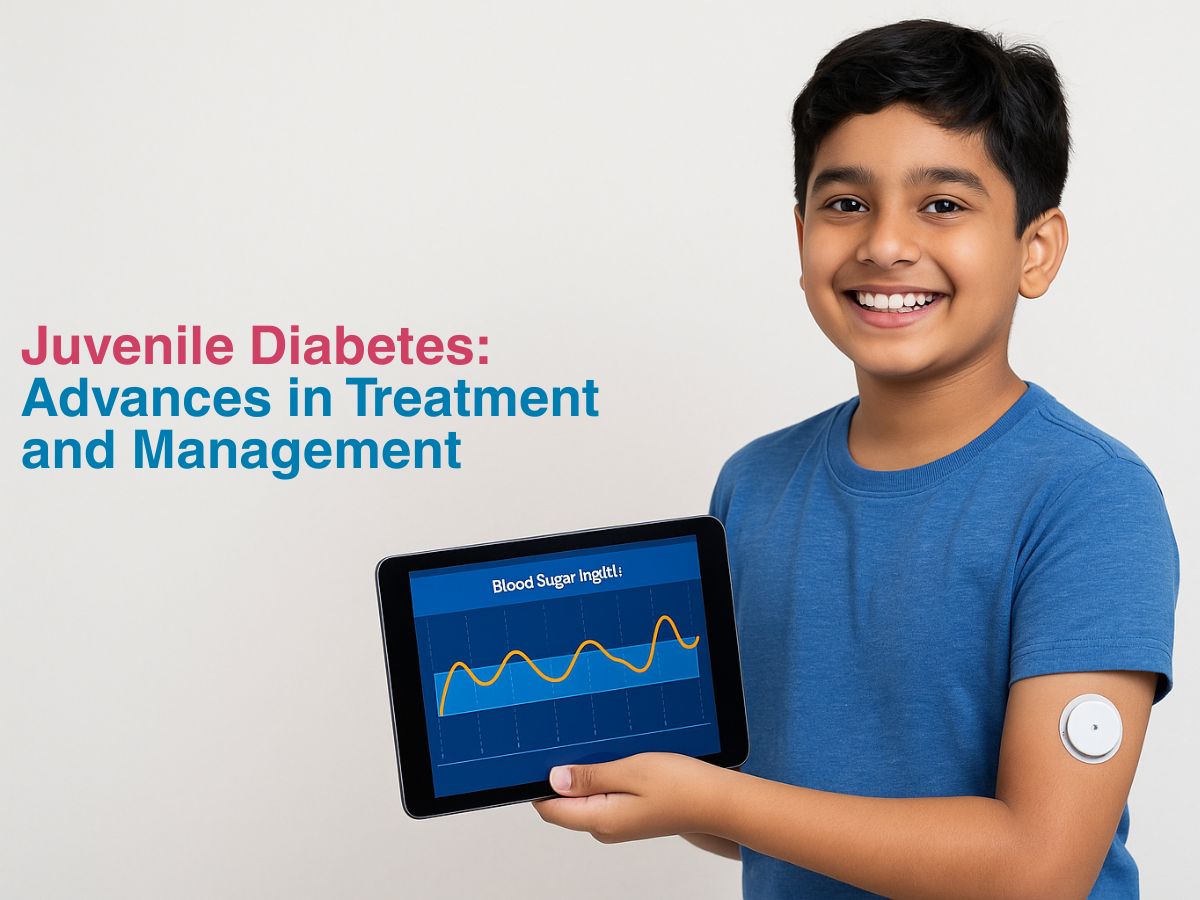
Juvenile Diabetes: Advances in Treatment and Management
 Sometimes, the body loses its script. The pancreas, once fluent in insulin’s language, forgets its lines. A child grows tired, thirst grows endless, energy thins like dusk. A blood test confirms what the body has been whispering: the sugar no longer listens to its commands. But this is not the end of the story. Not anymore.
Sometimes, the body loses its script. The pancreas, once fluent in insulin’s language, forgets its lines. A child grows tired, thirst grows endless, energy thins like dusk. A blood test confirms what the body has been whispering: the sugar no longer listens to its commands. But this is not the end of the story. Not anymore.
Juvenile diabetes used to be a life rearranged by restriction. Today, it is a life adjusted with elegance because of newer tools and smarter rhythms. Technology that fits in tiny pockets, knowledge that feels like power, not pressure. To raise a child with Type 1 diabetes now is to become a quiet scientist, a gentle witness. It is to hold hands with medicine that helps your child’s body as they learn to inhabit it.
Advances in Insulin Therapy for Kids-
Insulin has grown up, too. It no longer arrives in the sharp language of syringes alone. Now it hums beneath clothing, through pumps no larger than a pebble, guiding each drop of insulin like a watchful friend. These aren’t just devices. They are adaptive extensions of a child’s needs. They learn when sugar rises and falls when the body rests. Even more graceful are automated insulin systems. Tiny tag teams of pumps and sensors – they listen to the body in real-time, adjusting doses as a river adjusts to rain. This is insulin not used as a futile command, but to have a proper conversation with your system.
As for the child? It means less disruption. Fewer rules. More room to run, eat, forget and laugh.
Continuous Glucose Monitors For Type 1 Diabetes-
There was a time when ‘sugar’ was only visible through pain from pricked fingers or through guesswork. Now, it is observed gently.
Continuous Glucose Monitors (CGMs) live just beneath the skin, measuring, transmitting and alerting you as necessary. They watch sugar like the moon watches the tide. They are steady, quiet, and constant. Parents no longer have to keep watch at night or hover over beds fearing a drop. The data comes quickly, on phones and watches. Teachers can know. Coaches can support. And the child learns to notice their own fluctuations. Not as a sign of danger, but as their own rhythm. CGMs don’t just make diabetes safer. They make it easier for us to deal with it too.
How Parents Can Help Children with Diabetes-
Raising a child with Type 1 diabetes is not about perfect numbers. It’s about graceful responses. You become a reader of signs: in mood, in skin, in silence. You learn to pack snacks not just for hunger, but for the unexpected. You hold space for fear without feeding it. You help your child see their condition not as a flaw, but as a form of awareness.
At school, preparation softens the load.
• Speak gently, but clearly, with teachers and staff
• Create care plans that feel like partnerships, not demands
• Empower your child with language. Simple words to ask for help, explain their gear, name their needs
You’re not aiming to make school normal. You’re aiming to make it kind.
Best Diets for Juvenile Diabetes Management-
Food is memory. Comfort. Celebration. It should remain so, even with diabetes. What works best for children with Type 1 is not a strict diet, but a steady one. A rhythm of meals that support insulin’s timing and prevent dramatic highs and lows.
What this often includes:
• Slow carbohydrates-whole grains, lentils, oats
• Fresh fibre-vegetables in all colours, skins left on
• Gentle protein-from legumes, dairy, nuts, lean meats
• Healthy fats-avocado, olive oil, flax
• Water as default. Sugars as treats. Timing over temptation.
Portions are not about restriction but prediction. It’s less about no and more about when.
Conclusion
Juvenile diabetes is not a life postponed. It is a life translated. The child still grows, dreams, rebels, forgets and heals, but they do so with a second language in their pocket. One of glucose curves and carbohydrate choices. Of checks, yes, but also of courage. Thanks to new insulin tools and real-time sensors, care no longer interrupts childhood. It accompanies it, softly. The sharp edges have been filed down. The unknowns have become readable. The goal is not perfect control. The goal is trust -in the child, in the tools and in the evolving nature of care. The world has changed and now- a child with Type 1 diabetes can grow up not just well, but really well!






